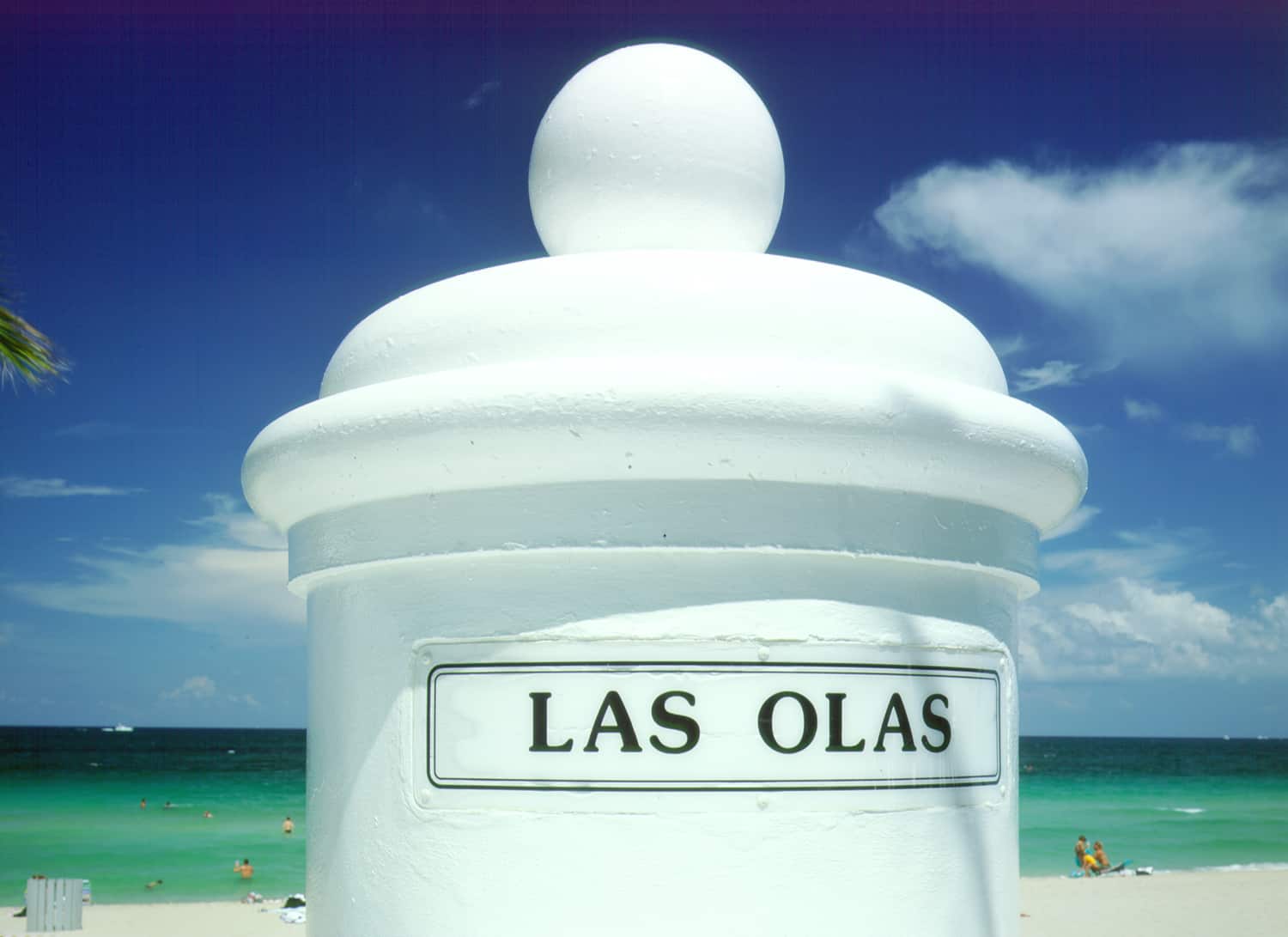With its remarkable bounty of attributes, this Gold Coast city that began as an 1800s fort town is a modern vacation venue with countless blessings, both natural and otherwise. First, its southeast coast location between Miami and Palm Beach guarantees year-round sunshine and a balmy sub-tropical climate – the perfect environment for its sweeping stretch of sand shore ranked among the most beautiful in the state. In fact, it was the city’s splendid beach that once attracted annual hordes of rowdy Spring Breakers, however, that era ended in the 1980s when Fort Lauderdale’s image took a turn from college student hangout to world-class holiday destination. With more than 11 kilometres of glistening sand and an impressive beachfront promenade flanked by an array of shops, restaurants and resort hotels, Fort Lauderdale’s outstanding waterfront is arguably its main attraction. Nevertheless, a multitude of entertainment options beyond the beach help make the city one of the Sunshine State’s most popular vacation spots.
 Photos Greater Fort Lauderdale CVB
Photos Greater Fort Lauderdale CVBWater, Water Everywhere
With more than 480 kilometres of navigable inland waterways, it’s not surprising Fort Lauderdale earned the nickname, “Venice of America.” Its intricate network of water-filled tentacles (part of the Intracoastal Waterway) has proven to be a huge asset to the city as a tourist attraction. These manmade Venetian-style canals dredged in the 1920s are water routes to city hotels, restaurants, top attractions, shopping and multi-million-dollar mansions. A variety of ways to explore the web of waterways includes kayak tours, sightseeing cruises, water taxis and even Italian-style gondolas. The romance of a moonlight cruise on the canals can easily cause visitors to wonder if they are in Fort Lauderdale or Venice.Los Olas Boulevard
Located in the heart of the city, this is the town’s busiest and prettiest street. Popular day and night, this grand avenue divided by a landscaped median filled with tropical flowers and towering trees is a hub for dining, shopping, galleries, chic boutiques, sidewalk cafes, nightclubs, bars and even horse-drawn surrey rides. Known as the jewel of Fort Lauderdale, the street is filled with scores of restaurants offering every cuisine imaginable including Asian, Italian, Greek, Mexican, French and, of course, American. Shopping is endless where visitors can purchase everything from designer goods to souvenirs, and for nights on the town, there are options galore. Arguably the most famous is the beachfront Elbo Room, an enduring city landmark established in the late 1930s at the base of Las Olas. This still popular watering hole that rose to fame when it was featured in the 1960 and 1984 remake of the movie, Where the Boys Are, has welcomed visitors from around the world for more than 70 years. Photos Greater Fort Lauderdale CVB
Photos Greater Fort Lauderdale CVBHalls Of Fame
Attracting thousands of visitors a year, the International Game Fishing Association’s Fishing Hall of Fame & Museum sets the standard for facilities dedicated to the sport of angling. Featured are interactive fishing-related kiosks, antique rod-and-reel displays, contemporary tackle exhibits, life-sized replicas of more than 200 species of fish and a virtual reality “Catch Gallery,” where visitors can try to reel in a marlin or sailfish. The city is also home to the International Swimming Hall of Fame, a shrine dedicated to the history of aquatic sports. Its host of artifacts includes the Olympic swimming medals earned by Johnny Weissmuller, the man also remembered for his movie role as Tarzan.Reef & Wreck Diving
The waters off Fort Lauderdale are ranked among the world’s top ten dive destinations helped by the fact the Gulfstream current flows close to the city’s shoreline washing an extensive coral reef with clear, temperate waters and bringing along with it hundreds of species of tropical fish. The reef extends from Miami north to Palm Beach putting Fort Lauderdale smack in the middle of the tract with the largest number of dive sites including more than 100 reef and wreck locations. Many of the popular wreck sites were created through an artificial reef program involving the intentional sinking of derelict vessels including barges, freighters, tugs, schooners and Navy ships that now lie in varying depths at the bottom of the ocean floor. While most sites are less than a mile from shore, some are so close divers and snorkellers can swim to them.Riverwalk Entertainment District
Located in the heart of downtown, bordering a three-kilometre stretch along the bank of the city’s New River, Fort Lauderdale’s Riverwalk Entertainment District features a host of unique galleries, fine dining, shopping, world-class concerts and a year-round roster of special cultural events. It also links many of the city’s historical landmarks and cultural establishments such as the Museum of Art, the Florida Historical Society Museum and the Broward Center for the Performing Arts, one of the state’s major performing arts venues. Always a bustling hive of activity, the district is also home to the Stranahan House, the city’s oldest surviving attraction. Built in 1901 and serving as Fort Lauderdale’s first trading post and meeting hall, the home’s furnishings and ancient photographs evoke the early days of the city well before the idea of it becoming one of Florida’s top vacation venues was ever conceived.For more information, visit www.sunny.org


